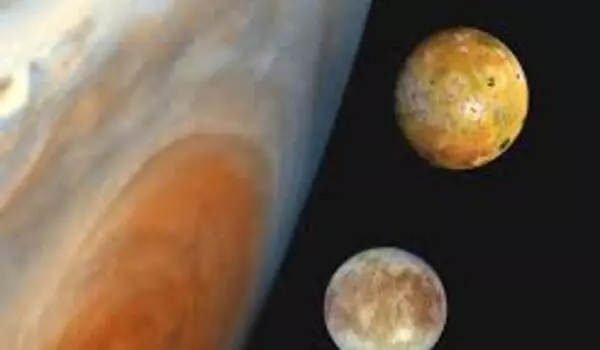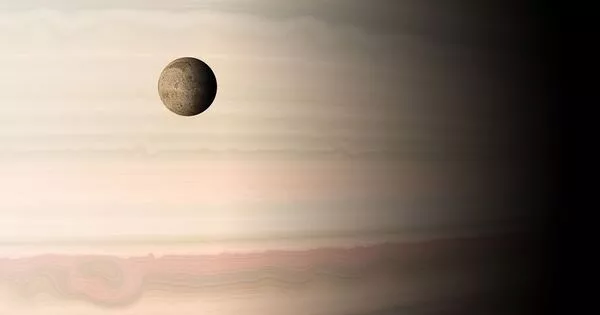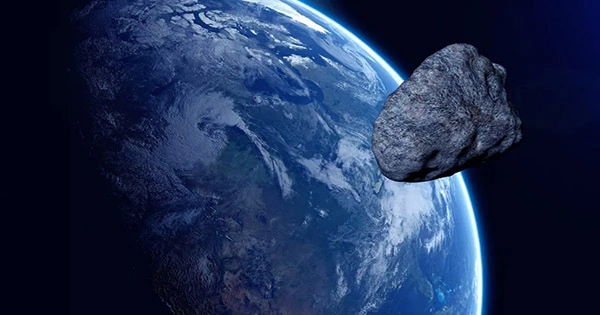Europa, Jupiter’s moon, is one of the most fascinating planetary bodies in our solar system because it is one of the few places where we believe life may exist beyond Earth. It’s known as an icy moon because its surface is almost entirely covered in water ice, but it’s the rumored saltwater ocean that swirls beneath its icy crust that has scientists buzzing about what kinds of life we might find there. While NASA’s much-anticipated Europa Clipper mission isn’t set to launch until 2024, scientists are currently forced to study Europa’s surface until we can get a better look at what lies beneath the icy outer shell.
In a recent study published in The Planetary Science Journal, a team led by the Southwest Research Institute (SwRI) used the Hubble Space Telescope to observe Jupiter’s moon, Europa, at ultraviolet (UV) wavelengths, filling a “gap” in the various wavelengths used to observe this icy water world. The team’s near-global UV maps show concentrations of sulfur dioxide on Europa’s trailing side, or hemisphere. Europa, like Earth’s Moon, is tidally locked with Jupiter, and the trailing hemisphere is the side of the moon that always faces away from the satellite’s orbital direction.
The Hubble Space Telescope was used by a team to observe Jupiter’s moon, Europa, at ultraviolet wavelengths, filling a ‘gap’ in the various wavelengths used to observe this icy water world. The team’s near-global UV maps show sulfur dioxide concentrations on Europa’s trailing side.
Europa’s relatively young surface is primarily composed of water ice, though other materials have been detected across its surface. Determining whether these other materials are native to Europa is critical for understanding Europa’s formation and subsequent evolution.
Dr. Tracy Becker
The Hubble Space Telescope was used by a team led by the Southwest Research Institute to observe Jupiter’s moon, Europa, at ultraviolet wavelengths, filling a “gap” in the various wavelengths used to observe this icy water world. The team’s near-global UV maps show sulfur dioxide concentrations on Europa’s trailing side.
SwRI will advance these studies with the Europa Ultraviolet Spectrograph (Europa-UVS), which will observe Jupiter’s fourth largest moon from NASA’s Europa Clipper, which is scheduled to launch in 2024. Scientists are almost certain that beneath Europa’s icy surface is a saltwater ocean containing nearly twice as much water as all of Earth’s oceans combined. This moon could be the most promising location in our solar system for life beyond Earth.

“Europa’s relatively young surface is primarily composed of water ice, though other materials have been detected across its surface,” said Dr. Tracy Becker, lead author of a paper describing these UV observations. “Determining whether these other materials are native to Europa is critical for understanding Europa’s formation and subsequent evolution.”
Assessing the surface material can provide insights into the composition of the subsurface ocean. SwRI’s dataset is the first to produce a near-global map of sulfur dioxide that correlates with large-scale darker regions in both the visible and the ultraviolet wavelengths.
“The results were not surprising, but we did get much better coverage and resolution than previous observations,” said SwRI’s Dr. Philippa Molyneux, a co-author of the paper. “The majority of the sulfur dioxide is observed in Europa’s “trailing” hemisphere. It’s most likely concentrated there because Jupiter’s co-rotating magnetic field traps sulfur particles emitted by Io’s volcanoes and slams them against Europa’s backside.”
Io is another of Jupiter’s largest moons, but it is the most volcanic body in the solar system. The magnetic field of Jupiter can cause chemical reactions between the water ice and the sulfur, resulting in sulfur dioxide on Europa’s surface.
“In addition to studying the sulfur dioxide on the surface, we’re still trying to figure out why Europa, which has a surface known to be dominated by water ice, doesn’t look like water ice at ultraviolet wavelengths, as confirmed by this paper,” Becker said. “We’re working hard to figure out why.”
















